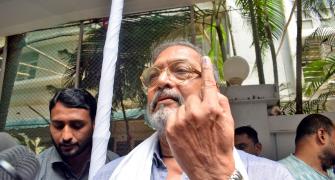Taxes are one of the major source of revenue for the government. The government levies taxes on its nationals in order to invest in resources that would enable a country to grow at a steady rate in the long-term.
Taxes are levied on goods, services, imports, personal income, wealth and corporate income. Lets look at the Indian government's performance in terms of taxes.
India, as a country, is among the economies that have lowest tax to GDP ratio (total government tax collections divided by the country's GDP). The central government tax to GDP ratio stood at 7.3% in FY03, which is much lower than most of the developed countries. The following graph gives a picture of how over the years this ratio has moved.

The tax to GDP ratio in India is quiet low compared to other countries in the world. While countries like Sweden has a tax to GDP as high as 54%, ours is amongst the lowest. Among the developing countries too, India's Tax to GDP ratio is the lowest.
 Data Pertains to Federal/Central Government tax collection
Data Pertains to Federal/Central Government tax collection
To understand why we have such low percentage ratios, we need to understand the breakup of tax revenues. Unlike developed countries, majority of tax revenues is from indirect taxes, which mostly constitutes excise and customs duty.
From the following figure, it can be noted that excise contributes to about 39% of tax revenues of the government. Since the share of manufacturing in the GDP has been on the decline, the tax receipts have not grown in line with the GDP.
It has to be remembered that though the industrial sector account for only 25% of the GDP, this sector account for an estimated 2/3rd of tax burden. If one were to look at the key growth drivers of GDP in the last five years, the push has come from the services sector, which is taxed marginally at the current juncture.
Added to this, agricultural income is also tax-free. Overall, one has to view this tax to GDP ratio of India with this backdrop.
The rationalizing the excise and customs duty in line with global markets in the last decade has meant that the government has been unable to reduce its dependence on the industrial sector for tax receipts.
With customs and excise duties expected to fall further, the need to diversify this basket is of high significance.

Taxing the services sector is one way of achieving this objective. Services, which now contribute to about 58% of the GDP, contribute very minuscule amount to the tax revenue.
Over the years, the government has made efforts to bring in services under the tax net. But the real effect of this will be reflected in some years from now. In fact, the government has targeted tax receipts of Rs 800 bn by the year 2009 from the services sector.
Why is the tax-GDP ratio important?
If the new government is talking about increased public investment in agricultural, education, healthcare and so on, where is the money going to come from? Increasing private sector participation is one way of achieving this objective.
But this has its own cost implications. The government therefore, has to play a vital role in public investments from the long-term interest of the country.
If this has to be achieved, widening the tax net by bringing in services and agriculture is one way. But will higher taxes impact the competitiveness of the services sector remains to be seen.
Finance Minister P Chidambaram initiated some tax reforms in the mid-1990s (voluntary disclose of income scheme and lowering of tax rates to name a few). A lot is expected from the finance minister in his term.
Hopefully, the forthcoming budget could be a good platform to set the stage for next generation of tax reforms.
Over to the finance minister!







